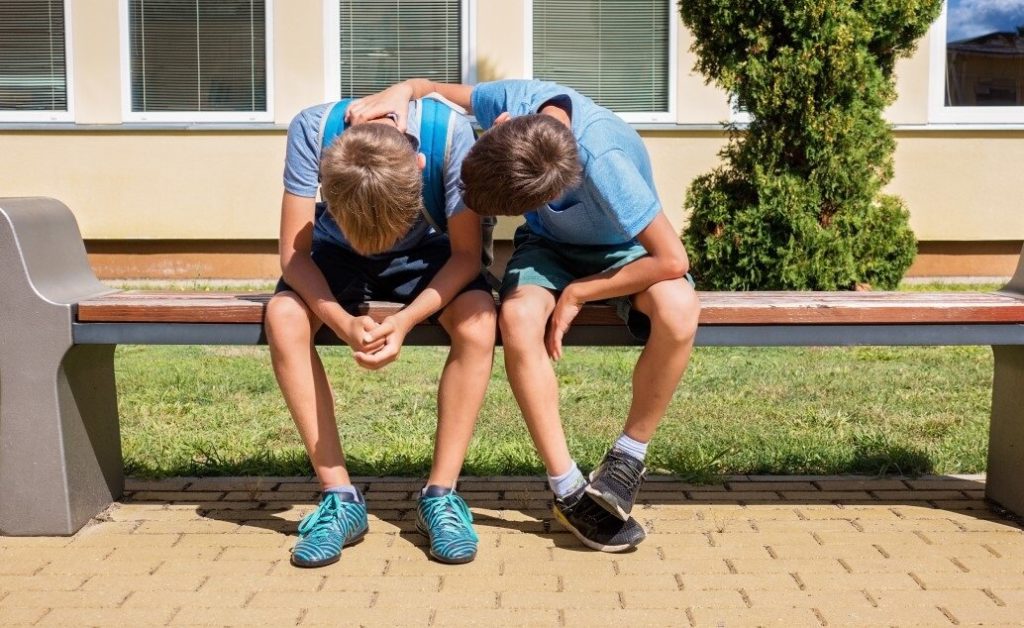
I recently saw a story on “World News Tonight With David Muir” about a 27-year-old man who gave 30% of his liver to a toddler he had never met. I wondered what could lead to that sort of compassion. I wondered if he was born that way, or if maybe he had parents or teachers in his life who strove to build empathy and compassion in him.
The next day in a preschool classroom, I saw a girl become upset that she did not have crayons because they were all in use at the time. She slumped down into a chair, staring at a beautiful mandala coloring sheet that she could not color. As tears welled up in her eyes, many of her friends continued coloring, and some clutched their crayons even tighter because, after all, they had them first.
Then, I noticed another girl quietly watching this unfold from across the room. She approached her sad classmate, sat in the chair next to her and slid the three crayons in her hand in front of the girl without saying a word. The previously upset classmate looked up, smiled and said, “Thank you. Purple is my favorite,” and passed the other two crayons back to her. The two girls sat together, coloring silently, for a long time.
As I witnessed this random act of kindness, I realized it wasn’t really about the crayons; it was about disappointment and feeling alone. I wondered, Can we teach young students what they must know to pass tests, advance to the next grade, be successful and confident, but also help them be kind to the people who need it the most?
We can begin by keeping five things in mind.
1. Model kindness and empathy to your students.
See your students over there? They’re watching you. They see you saying “good morning,” speaking about people kindly, and showing compassion to those who are sad. Modeling kind behavior is the best way to teach it, because children will not always do as we say, but they will always do as we do.
2. Give them tools with empathy activities.
Young children can feel overwhelmed easily. Those poor little frontal lobes are still forming, and sometimes there is nothing they can do but let it all out. So give them a place to let it out, like a Peace Corner. Calm-down activities, Wheels of Choice and other stress-reducing activities can also help children learn to control and conquer complex emotions rather than letting those feelings conquer them.
3. Let them know they’re not alone.
Years ago, when I taught fifth grade, a child told me something I have never forgotten: “I like you because you listen to me.” I know we teachers are incredibly busy, but try to remember that the child in front of you might not have many people in his or her life who are willing just to listen. Be the one who listens.
4. Encourage empathy and don’t force apologies.
When I see a child intentionally hurt another child’s feelings, I say, “Wow. He looks so sad. I wish I knew something that would make him feel better.” Then, I give the hurt child a hug and I walk away. Sometimes, a sincere “I’m sorry” takes hours – sometimes days. But when it comes, it should come of the student’s own volition, not from a teacher’s directive.
5. Help their families model empathy to students.
I was 25 years old when I became a mother, and I had no idea what I was doing. I have met parents in their 40s who say they don’t know what they are doing either. Suggesting resources, providing empathy activities and offering encouragement when parents are struggling can help. Sometimes they just need to hear, “It’s going to be okay. You’re a good mom and I know you are doing your best.” Pointing parents to resources like Parenting Solutions with Positive Discipline can also help.
So, back to that amazing young man on the news. The truth is, I may never inspire a student to go that distance, but I’ve decided to try to teach the children in my care to be a little nicer, a little more empathetic and a little more aware that their words and actions are important.
Perhaps we should all just take it just one crayon at a time.
Teachers and other early childhood educators can enroll in one of ACE’s online degree programs. Learn about our M.Ed. in Early Childhood Education, M.Ed. in Elementary Education, and M.A. in Elementary Teaching programs.

